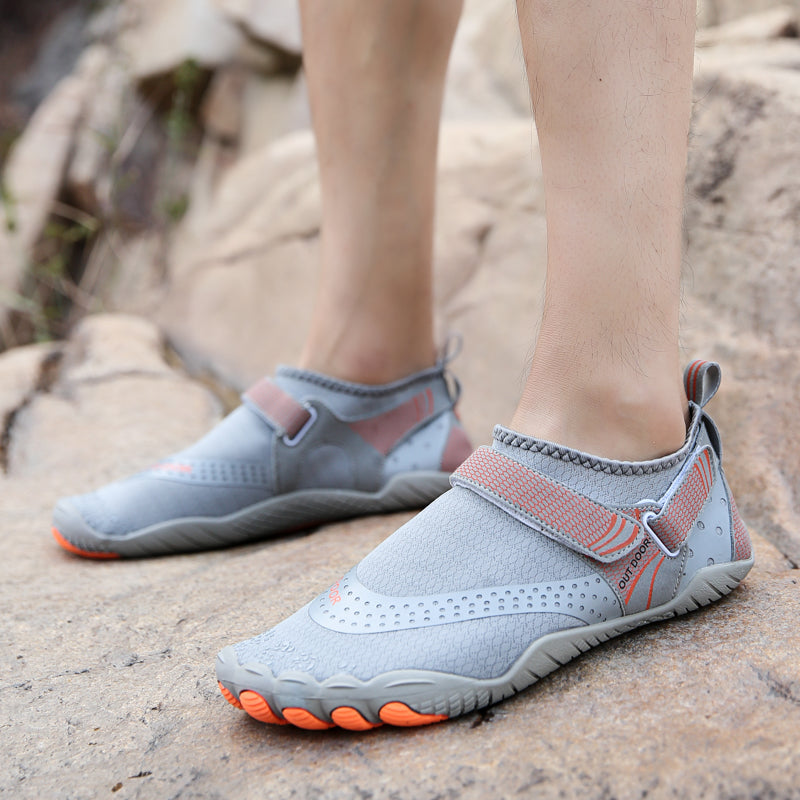The first question that someone has when they hear the words ‘Barefoot Shoes ‘is what on earth are they?
This is understandable given that the term barefoot shoe is an oxymoron: going barefoot while wearing shoes at the same time isn't actually possible.
Here’s what we mean when we say Barefoot Shoes:
“A barefoot shoe is designed to allow the foot to function as freely and naturally as possible. This means that it must not restrict the foot in any way.”
In other words, the goal is not to minimize the thickness of the sole but to allow the foot to work the same way it would if you were barefoot. The 'barefoot' in barefoot shoes has much more to do with the feeling provided by the shoes, which comes as close to barefoot running as is possible while wearing shoes. Barefoot shoes seek to restrict the foot's natural freedom of movement as little as possible. This is why you'll often hear the term 'minimal shoe'. In order to be a clear as possible, we'll explain below what exactly makes a good barefoot shoe.
Zero drop
The 'heel drop' of a shoe refers to the height difference between the area at the front of the shoe and the area under the heel of the foot. Barefoot shoes come without heel drop, so the heel of the foot is not lifted up or otherwise elevated. The sole has the same thickness along its entire length. This means that the whole foot is flat against the ground, the same as when going barefoot.
Thin soles
Barefoot shoes have a very thin sole. The wearer of the shoe should be able to feel the ground beneath their feet. Similar to the palms of the hands, the soles of the feet have a huge number of nerve endings which provide information about their surroundings to the brain. This information, so-called 'sensory feedback', influences our sense of balance and spatial orientation.
Lightness and flexibility
The flexibility of the sole is just as important as its thickness. The mobility of the shoe is determined by the material of the sole. Andune's are made using a flexible rubber sole and mesh uppers to keep them light and flexible.
Wide toe box
Most conventional shoes get narrower towards the front - not just fashionable ladies' pumps, but also totally normal sneakers. This doesn't match the shape of our feet and means that the toes are squashed into an unnatural shape. As a result, freedom of movement and stability are limited. The toe box of barefoot shoes is particularly wide and shaped to match the foot. This allows the toes to grip the ground and naturally spread out while walking.
Minimum support
Traditional shoes usually include some kind of cushioning, padding or inlay. The intention is to support and make things easier for the foot as it works. This support certainly seems positive at first glance. If the foot doesn't have to do any work, however, it grows weaker over time. It remains in 'sleep mode' when walking, even while it's in motion. Barefoot shoes deliberately minimise support. The means that the foot (re)learns to support itself. It grows strong and powerful over time.
Are Barefoot Shoes Right for you?
Barefoot shoes are ideal for almost anyone who wants to learn how to walk healthily. Walking barefoot is wonderful and brings several health benefits in addition to an increased sense of well-being. These generally include strengthening the lower leg and foot muscles and improving posture. Exercising in barefoot shoes promotes more natural and therefore more dynamic, agile and stable, and safe movement patterns. This can prevent injuries and increase athletic performance.


